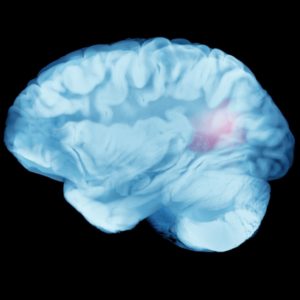Former rapper and founder of Beats By Dre was rushed to Cedars Sinai Hospital in Los Angeles due to a brain aneurysm in early January. Dr. Dre was admitted directly to intensive care where doctors announced that he was “stable and lucid.” His post on Instagram indicated all was well. “Thanks to my family, friends, and fans for their interest and well wishes. I’m doing great and getting excellent care from my medical team. I will be out of the hospital and back home soon. Shout out to all the great medical professionals at Cedars. One Love!!”
Just hours after it was announced Dre was hospitalized for a brain aneurysm, a group of suspected burglars attempted to enter his Brentwood mansion. Four people lead the Los Angeles Police on a slow chase along Sunset Boulevard where they were subsequently arrested.

Who is Dr. Dre
Andre Romelle Young, aka Dr. Dre, was a founding member of the controversial gangster rap group, N.W.A. in 1987. Their music reflected the anger of urban youth but their funky beats appealed to both black and white Americans. By 2002 Rolling Stone ranked N.W.A. #83 on their list of “100 Greatest Artists of All Time.”

Fast forward to 2006 and Young founds Beats by Dre, a headphones brand that has a premium sound quality and surprisingly heavy bass line. Dre enlisted his musician and celebrity friends to endorse Beats making them a must-have for everyone who loves music. He then sold Beats to Apple for $3.2 billion in 2015 and Forbes estimated the music icons worth to be $800 million.
Dr. Dre recovered quickly from his brain aneurysm and has returned home, but they still don’t know exactly what caused it.

What is a brain aneurysm?
An aneurysm is like a bubble in the blood vessel, and thousands of people have them in their brain. Most are harmless and it often looks like a cherry hanging on a stem. But when the cherry bursts, blood rushes into the brain, which can cause brain damage and even death. This bleeding is a type of stroke called a subarachnoid hemorrhage.
A ruptured aneurysm is life threatening and requires emergency medical treatment. But most aneurysms do not rupture. A brain aneurysm can happen to young, healthy people with no prior medical history.
Dr. Dre was extremely lucky but thousands of Americans are not so lucky.
How many people affected?
According to the Brain Aneurysm Association, there are an estimated 6.5 million Americans living with an unruptured brain aneurysm. That is 1 in 50 people and the rate of rupture is 10 per 100k people or about 30,000 people annually in the United States.
What are the warning signs?
According to the Mayo Clinic, symptoms include sudden or severe headaches, double vision, nausea, sensitivity to light, seizures, loss of consciousness, and even cardiac arrest. It’s been likened to the blinding pain of being hit on the head.
According to Dr. Mitchell Elkins, president of the American Heart Association, says “Many people walk around with unruptured brain aneurysms,” he said. “Most are small, and people live with them without any problem at all. We only worry about them when they get large enough to cause a problem.”
But experts say to heed the warning signs and listen to your body. This is a condition where every second counts. Listen to you body and go to the hospital especially if you face risk factors like family history, smoking, high blood pressure, and connective tissue disorders.
What to do?
A patient must go to the hospital as soon as possible to limit the amount of brain damage. Doctors use test to determine how bad the rupture is and there are 2 ways to fix it depending on its location, and the patients health.
Doctors can clip off the bubble so it can’t rupture again and that requires immediate brain surgery. Another option is snaking a catheter through a blood vessel, and into the brain to fill the bubble with glue to prevent it from breaking again.
Listen to the warning signs
Never dismiss a severe and sudden headache that is worse than anything you have ever had before. Listen to your body and get to the emergency room immediately.

What’s the NeuroPraxis difference?
- We are goal-oriented with measurable outcomes.
- We are the most cost-efficient because we come to you, no office, no overhead. In fact, we are 30-40% cheaper than in-patient care.
- We keep the patient at home and help them thrive in their own environment and incorporate families into the recovery process.
- We utilize cutting edge telehealth technology to monitor and ensure outcomes.
- We change and adjust our approach and therapies based on real-time data.
- We have an outstanding success rate!
If you or a loved one has suffered from a brain aneurysm or any other debilitating brain injury please reach out to us today for a FREE consultation.
